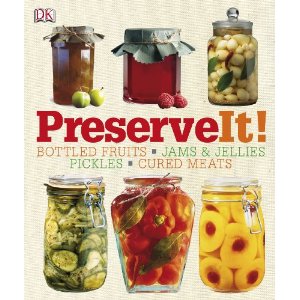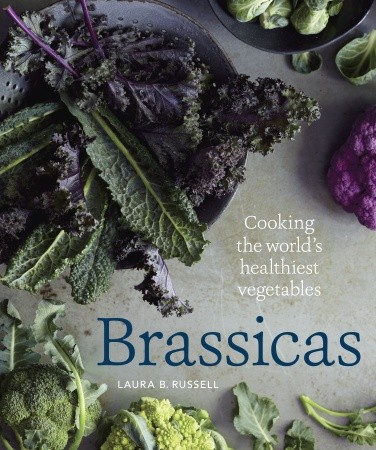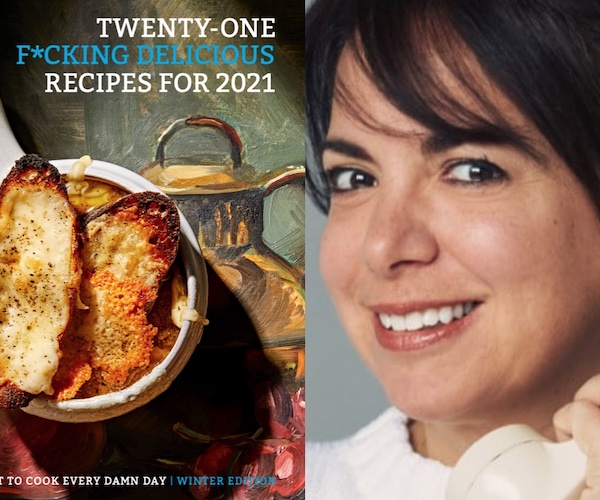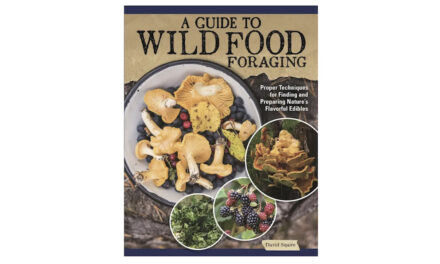by Dean Tudor
Good Food Revolution is proud to publish Dean Tudor’s patented ‘Quality Price Ratio’ reviews of contemporary food and wine book reviews. To see all of Dean’s monthly picks and pans, visit www.deantudor.com. – Malcolm Jolley, Ed.
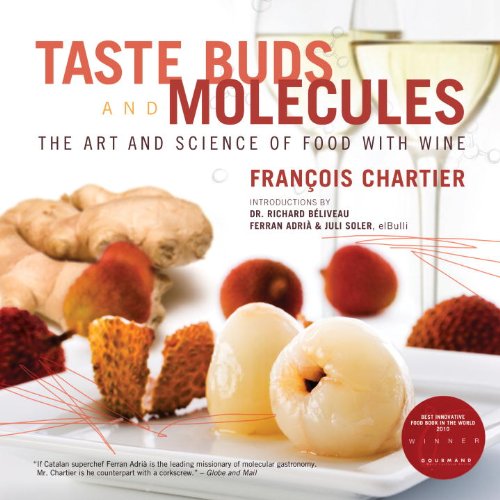
Tastebuds and Molecules: The Art and Science of Food with Wine is an English translation of the 2009 French-Canadian book by Francois Chartier, a leading sommelier in Quebec and author of the annual La Selection Chartier, a wine-buying guide now in its 15th edition. He is currently researching more on molecular harmonies and wine stewardship. Certainly, one cannot beat the endorsement of Ferra Adria and Juli Soler of elBulli restaurant in Spain. He begins by identifying the aromatic compounds responsible for fragrances, and finding which ones are in common with wine and food. He takes the gustatory experience right down to the molecular level in both wine and food, and then makes suggested pairings based on the relationships. This is only the first of a series of books, as he works his way through the aromas of foods and wines. Obviously, he owes a debt to elBulli, but he takes the molecular experience steps further. There’s a chapter on Sauvignon Blanc and anise-flavoured foods and wines; there’s a chapter on gewurztraminer and ginger and lychee; strawberries and pineapples also have a connection. Rosemary seems to go well with Alsatian wines. There are chapters on sherries (all things to all people), maple syrup, oak and barrels, cloves, saffron, cinnamon, and capsaicin. He ends up with a molecular tasting meal with two master chefs. There are a few recipes and some menu ideas. There’s a graphic display and a white-on-black layout that could be hard (or fatiguing) for some to read. Maybe it was an attempt to get younger readers? I think that I would really like to read this book as a text, maybe an e-text, without the pictures and graphic charts and arrows. It’s really busy, and it does cause enough stress that I’d like a drink of wine after I read each chapter!
Audience and level of use: the serious food and wine lover.
Some interesting or unusual facts: Eugenol is the dominant volatile compound in cloves and is one of the principal aromatics generated by charred oak barrels. Cloves also contain vanillin and other aromatics that are found in oak barrels. The connection is that an oak-aged wine goes perfectly well with clove-inflected foods.
The downside to this book: my eyes hurt from reading all the graphical-layout of the text with its many colours and arrows.
The upside to this book: the same layout may just appeal to younger wine lovers and attract them to reading about the quality of wine and
food pairing.
Quality/Price Rating: 91.

Zwilling J.A. Henckels Complete Book of Knife Skills: The Essential Guide to Use, Techniques & Care is by Jeffrey Elliot, a Henckels executive chef and Director of Culinary Relations for the firm. His co-author is James P. Dewan, a food writer for the Chicago Tribune and a culinary instructor. Although it is a “product” book with endorsements for Henckel knives, any knife can be used. Chefs have to use knives for every aspect of cooking. Learning how to hold and use a knife correctly will help the home cook work more safely and effectively, efficiently, and faster. Knives also promote uniform cooking by proper sizing, and presentation. This book has 1200 photographs, mostly in a series of techniques. The only thing better may be a video presentation – you can find several out there on YouTube or DVD. The opening chapter is the primer: all you need to know about knives, including a useful history, techniques of forging, knife styles, parts of the knife, blade styles, and more. Henckels makes a Japanese line, a these too are included (the Gyutoh, the Santoku, the Usuba, Kamagata, Nakiri, and others). Knife care is important, and how to maintain an edge is discussed. All of this takes the first 90 pages. Basic fruit and vegetable cuts (including how to pit an avocado or breaking up a garlic head) is followed by cutting poultry, cutting meat, cutting fish and shellfish, and carving cooked meats. For those with flair, the last chapter covers tomato roses, radish flowers, carrot flowers, and eight more garnishes. No recipes.
Audience and level of use: home cooks, culinary students.
Some interesting or unusual facts: bias-cut slices of meat are typically fanned out when they’re plated for a nice look.
The downside to this book: I am always leery of spiral binding because it is easier to rip out the pages.
The upside to this book: the photographs.
Quality/Price Rating: 91.
Preserve It! has been edited by Lynda Brown, with Carolyn Humphries and Heather Hinney. Recipes come from a variety of sources, including the Soil Association. This is another “times are tough” book, joining a parade of preservation books this year. DK does it up with a certain commercial slickness that I enjoyable to read and see. They always have great visuals in the photography. The main theme here is using surplus foods: fruit, vegetables, meats, fish, dairy. There are the usual step-by-step fully illustrated instructions. The book covers jams, syrups, sausages, cheese, butters, ciders and wines – all in 180 recipes and with over 600 photos. The arrangement is by type of preservation, beginning with natural storage. This is followed by drying, freezing, sweet preserves, savoury preserves, bottled and canned foods, preserving in oil, salting and curing charcuterie, smoking, and brewing/vinting wines and beers and ciders. At the beginning of the book, there is a heavy emphasis on equipment and on safety. Preparations have their ingredients listed in both metric and avoirdupois measurements, but there is no table of equivalents.
Audience and level of use: home cooks.
Some interesting or unusual recipes/facts: beet wine; pea pod wine; cranberry jelly; green bean and zucchini chutney; mushrooms in oil; wet-cured ham; salted turkey.
The downside to this book: nothing really.
The upside to this book: covers more than it says it does.
Quality/Price Rating: 89.
Microgreens: How to Grow Nature’s Own Superfood is by Fionna Hill, a gardener-floral designer who also writes books and magazine articles. It’s a wonder that this is one of the first books about microgreens, the tiny seedlings of herbs and veggies, since they have been on cooks’ radar for over five years. Anyway, the volume definition is that they are larger than sprouts but smaller than baby salad greens. They are useful to grow in a limited amount of space such as an apartment balcony or a window sill. Most varieties are ready in a week, and they contain a large amount of nutritional material. Hill gives us data on 20 popular varieties (arugula, beet, kale, peas, broccoli, basil, et al), as well as a dozen recipes. Flavours range from mild to hot, nutty or spicy, but microgreens are also interchangeable to some extent. A recipe may call for only as handful of microgreens: what they are will be up to what you grow. Preparations have their ingredients listed in both metric and avoirdupois measurements, but there is a table of equivalents. There’s a glossary and some international websites, but nothing specific to Canada.
Audience and level of use: adventurous cooks
Some interesting or unusual facts: “Flavours change as the plant grows. As the leaves open, they begin to manufacture energy from light. That gives them a change in flavour. The most intense flavour comes when that first leaf opens.”
The downside to this book: a bit short at only 107 pages, large type. More could have been said.
The upside to this book: a useful single-product book.
Quality/Price Rating: 86.
Party Vegan: Fabulous Fun Food for Every Occasion is by Robin Robertson, author of Vegan Planet and 1000 Vegan Recipes. She writes regularly for magazines on all aspects of vegans. Here she promotes some 25 or so menus with animal-free recipes for all occasions, from holiday meals and birthday parties to a tapas table or Mother’s Day brunch. The 140 dishes are extremely useful for parties of any kind; each has an indication of whether it is a “make ahead” or “Quick & easy”. Preparations have their ingredients listed in avoirdupois measurements, but there is no metric table of equivalents. There is also a separate listing of recipes by course, with an indication of their status as a make ahead or as a quick prep.
Audience and level of use: vegans and vegetarians.
Some interesting or unusual recipes/facts: two-potato shepherd’s pie; fava bean hummus; olive-and-caper stuffed cherry tomatoes; collard and red bean fritters; baked enchiladas with mole poblano; quinoa-stuffed Portobello mushrooms with wine-braised shallots.
The downside to this book: the purple ink can be fatiguing.
The upside to this book: you can still be a party animal who doesn’t serve animals at parties.
Quality/Price Rating: 87.
 Dean Tudor is a Ryerson University Journalism Professor Emeritus, The Treasurer of The Wine Writers’ Circle of Canada and creator of Canada’s award-winning wine satire site at fauxvoixvincuisine.blogspot.com. Visit Dean’s websites at deantudor.com and gothicepicures.blogspot.com. His motto: “Look it up and you’ll remember it; screw it up and you’ll never forget it.”
Dean Tudor is a Ryerson University Journalism Professor Emeritus, The Treasurer of The Wine Writers’ Circle of Canada and creator of Canada’s award-winning wine satire site at fauxvoixvincuisine.blogspot.com. Visit Dean’s websites at deantudor.com and gothicepicures.blogspot.com. His motto: “Look it up and you’ll remember it; screw it up and you’ll never forget it.”

